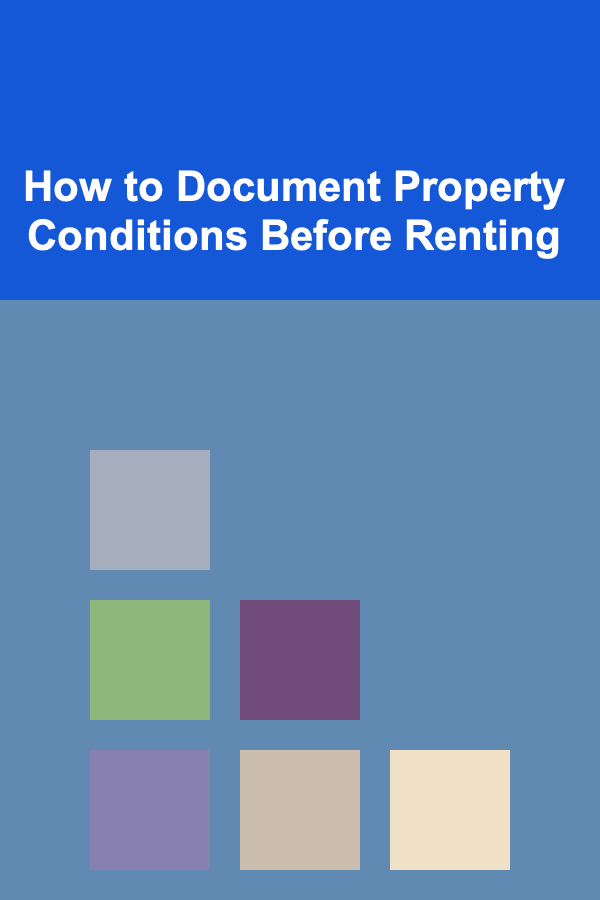
How to Navigate Insurance Billing as a New Nurse Practitioner
ebook include PDF & Audio bundle (Micro Guide)
$12.99$10.99
Limited Time Offer! Order within the next:

Navigating insurance billing can be one of the most challenging aspects of becoming a Nurse Practitioner (NP). As NPs increasingly take on primary care roles, understanding how insurance works---especially the complexities of billing---is essential for delivering effective patient care and ensuring proper reimbursement. New NPs are often expected to hit the ground running, and understanding how to handle insurance billing correctly can reduce stress and ensure your practice is financially sustainable.
This guide will break down the essential steps and tips for new nurse practitioners as they navigate the insurance billing process, from understanding codes and regulations to managing claims and rejections.
Understanding Insurance Billing Basics
At its core, insurance billing involves the submission of claims to insurance companies to request payment for services rendered to patients. The billing process is not limited to simply submitting claims; it also includes understanding insurance types, coding, and the reimbursement process.
Insurance Types
As an NP, you will likely encounter various types of insurance. These include:
- Private Insurance: Provided by companies like Blue Cross Blue Shield, UnitedHealthcare, or Aetna. These insurance plans usually have a network of approved providers.
- Government Insurance: Includes Medicare (for those over 65) and Medicaid (for low-income individuals and families). Medicare is federally funded, while Medicaid is state-specific.
- Workers' Compensation: Covers medical expenses and wages for workers injured on the job.
- Self-Pay: When patients do not have insurance and pay for services directly.
Each of these insurance types has different billing requirements, and understanding these distinctions will help prevent issues when submitting claims.
Key Players in the Billing Process
- Healthcare Providers: As an NP, you will be the one providing the service and generating the claim.
- Insurance Companies: They receive the claim and decide how much to reimburse based on the policy terms.
- Patients: Often responsible for co-pays, deductibles, and the balance after insurance pays.
- Billing/Insurance Specialist: In larger practices, a billing specialist may handle the claim submission process, but as an NP in a small practice, you may be responsible for it yourself.
CPT Codes and ICD-10 Codes
One of the most important components of insurance billing is understanding and correctly using CPT (Current Procedural Terminology) codes and ICD-10 (International Classification of Diseases) codes.
CPT Codes
CPT codes are used to describe the medical procedures and services you provide. These codes are critical to the billing process, as they tell the insurance company exactly what service was provided. For instance, if you performed a physical exam, the CPT code would indicate the level of exam performed (e.g., 99213 for an office visit for an established patient).
CPT codes are divided into three categories:
- Category I: Procedures and services that are commonly performed.
- Category II: Codes for performance measurement and quality reporting.
- Category III: Temporary codes for emerging technologies or services.
ICD-10 Codes
ICD-10 codes are used to describe the patient's diagnosis. These codes are essential for linking the services rendered to a specific condition, which helps justify the medical necessity of the treatment. For example, an ICD-10 code for hypertension (I10) would be used to show that the services provided were related to treating high blood pressure.
Both CPT and ICD-10 codes are needed when submitting insurance claims. Incorrect or missing codes can result in claim denials or delays in payment.
Navigating Insurance Reimbursement
Once you have submitted a claim to the insurance company, you must understand how reimbursement works and what to do if payment is denied.
Fee Schedules and Reimbursement Rates
Insurance companies often have specific fee schedules that dictate how much they will reimburse for certain services. These schedules may vary depending on the insurer, the geographic region, and the contract terms you have with the insurance company.
For instance, a specific CPT code for a particular service may have a different reimbursement rate depending on whether the service was provided in an urban or rural setting, or whether the service was performed in-network or out-of-network.
It's essential to familiarize yourself with the reimbursement rates for services you commonly perform. This can be done through reviewing contracts with insurance providers or by speaking to a billing specialist at your practice.
Understanding "Usual, Customary, and Reasonable" (UCR)
Insurance companies often use the "Usual, Customary, and Reasonable" (UCR) method to determine how much to pay for services. This involves comparing the amount billed by the healthcare provider to the typical rate charged for that service in the geographic area. If your billed amount exceeds the UCR, you may only receive partial reimbursement or be required to adjust your billing.
For new NPs, it's important to understand what rates are typical for your area. By joining professional networks or consulting with colleagues, you can get a better sense of reasonable charges.
Managing Co-Pays, Deductibles, and Co-Insurance
Insurance companies often have patients pay a portion of their medical bills. These costs can include:
- Co-pay: A fixed fee paid by the patient at the time of the visit (e.g., $20 for an office visit).
- Deductible: The amount the patient must pay out-of-pocket before insurance starts covering services.
- Co-insurance: A percentage of the costs the patient must pay after the deductible is met.
As a new NP, you need to ensure that patients are aware of their financial responsibility, and you may need to collect payments at the time of service. This may require familiarity with the patient's insurance plan and understanding the amounts they owe.
Submitting Insurance Claims
The process of submitting claims is a detailed one, and it's important to ensure accuracy at each step to avoid delays or denials.
EDI (Electronic Data Interchange) vs. Paper Claims
Most claims are submitted electronically via an EDI system. This method is faster, more accurate, and easier to track. However, some smaller insurance providers or certain services may still require paper claims.
Key Steps in the Claim Submission Process:
- Gather Patient Information: This includes insurance details, patient ID numbers, and demographic information.
- Select Appropriate Codes: Both CPT and ICD-10 codes must be selected to describe the services provided.
- Complete the Claim Form: Using software or paper forms, you'll need to fill out details like patient name, date of service, and provider information.
- Submit the Claim: This can be done electronically through your practice management system or through a clearinghouse that forwards your claim to insurance companies.
- Follow Up: Once the claim is submitted, you will need to track its status and follow up with insurance companies to ensure payment is processed correctly.
Handling Insurance Claim Denials
Even the most seasoned practitioners encounter insurance denials, and as a new NP, learning how to address these denials promptly is crucial for maintaining cash flow.
Common Reasons for Denials
- Incorrect Coding: Missing or incorrect CPT or ICD-10 codes.
- Lack of Medical Necessity: Insufficient documentation to support the need for a particular service.
- Out-of-Network Provider: If you're out of network with the patient's insurance, they may not cover the full cost.
- Missing Information: Missing patient or insurance information can lead to a denial.
Steps for Resolving Denials:
- Review the Denial: Understand the reason for the denial by reviewing the Explanation of Benefits (EOB) statement.
- Contact the Insurance Company: Call or email the insurance provider to clarify the issue.
- Correct Errors: If the denial was due to incorrect coding or missing information, resubmit the corrected claim.
- Appeal: If the claim was denied for medical necessity or other reasons, you may need to provide additional documentation or appeal the decision.
Tips for New Nurse Practitioners
- Invest in Billing Software: Practice management and billing software can simplify the billing process and reduce errors.
- Stay Informed: Insurance rules and regulations change frequently. It's important to stay updated on coding changes and insurance plan requirements.
- Work with a Mentor: If possible, find a mentor who has experience in insurance billing to guide you through the process.
- Network with Peers: Join professional groups or forums to discuss common billing issues and solutions with other NPs.
Conclusion
Navigating insurance billing as a new nurse practitioner can be complex, but understanding the basics and following best practices will help you overcome obstacles. From learning the necessary codes to handling claims, denials, and reimbursements, building your knowledge of insurance billing will improve your practice's efficiency and ensure you are compensated fairly for your services. By taking a proactive approach and continuing to learn, you will gain the confidence needed to handle the financial side of your practice successfully.
Reading More From Our Other Websites
- [Personal Care Tips 101] How to Match Your Lipstick with Your Outfit for the Perfect Look
- [Organization Tip 101] How to Create a Flowing Layout for Entertaining Guests
- [Personal Financial Planning 101] How to Save Money Effectively Without Sacrificing Your Quality of Life
- [Personal Investment 101] Make Money with AI: How Deep Learning Can Help
- [Home Pet Care 101] How to Manage Pet Separation Anxiety at Home
- [Home Maintenance 101] How to Schedule HVAC Maintenance for Energy Efficiency
- [Organization Tip 101] Walk-in Shower Conversion Ideas for Small Bathrooms
- [Home Storage Solution 101] How to Store Your Exercise Equipment Without Taking Up Space
- [Home Renovating 101] How to Choose the Right Contractor for Your Home Renovation Project
- [Home Storage Solution 101] How to Organize a Playroom with Creative Storage Ideas

How to Create a System for Managing Household Bills
Read More
How to Document Property Conditions Before Renting
Read More
How to Plan a Home Party for Every Occasion: Birthdays, Anniversaries, and More
Read More
How to Stage a Home for the Winter Market
Read More
Smart Solutions for Saving on Laundry and Cleaning Expenses Every Month
Read More
How To Use Your Network for Personal Branding
Read MoreOther Products

How to Create a System for Managing Household Bills
Read More
How to Document Property Conditions Before Renting
Read More
How to Plan a Home Party for Every Occasion: Birthdays, Anniversaries, and More
Read More
How to Stage a Home for the Winter Market
Read More
Smart Solutions for Saving on Laundry and Cleaning Expenses Every Month
Read More